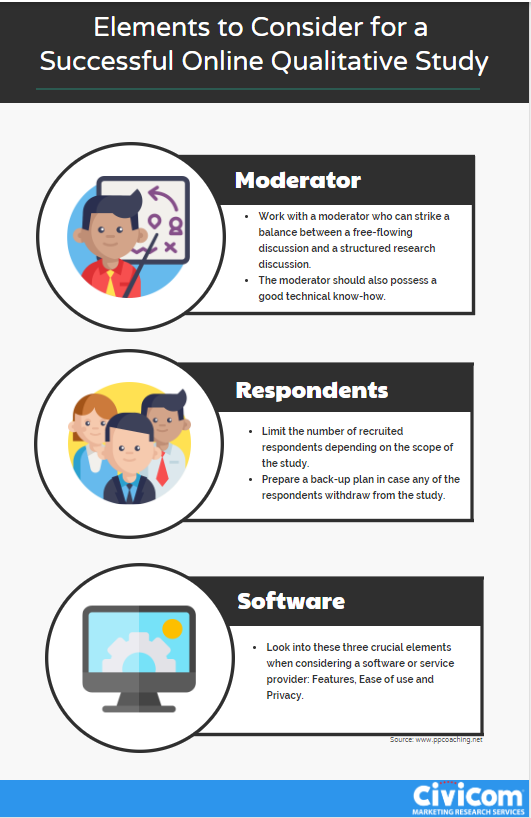
Online qualitative research made it possible to connect with respondents virtually. It eliminates geographical limitations, allowing for faster data generation and ultimately reducing costs.
While it has proven to be an effective and efficient means of drawing insights, there are still slip-ups that could happen if you are not careful enough. Here are three of the most common mistakes committed during digital qualitative research and how you can avoid them.

1. Not choosing the right moderator
An in-depth interview or a focus group discussion is only as good as its moderator. Therefore, working with a moderator who can strike a balance between a free-flowing and a structured research discussion is crucial.
Since online qualitative research is web-enabled, the moderator should also possess good technical know-how to facilitate online interviews, focus groups, or MROCs easily. You need someone who is experienced with time tracking and knows how to ask the right questions. Furthermore, it’s also a plus if your moderator can type fast to utilize the chat function feature of your platform.
Meet up with your moderator ahead of time to discuss the research objectives, specific points to consider, and any stimuli that will be presented. In between the study, determine whether or not the stimuli were effective so you can make the necessary modifications.
2. Gathering too many or too few respondents
Depending on the scope of your study, there has to be a limit to the number of respondents recruited. You wouldn’t want to over-recruit participants and end up taking so much time accommodating them all – especially if there’s no need to.
If they get bored or uninterested during your sessions, it’ll be easy for them to opt out of your study. The solution is to keep your participants at a minimum, say about 6 to 10 participants. Keep in mind that it’s important to have a backup plan in case any original participants withdraw or become unavailable at the last minute.
Instead of recruiting a large sample, focus on engaging and gathering in-depth insight from an optimally-sized respondent pool. Quality respondents largely determine the success of your interviews and focus groups.
3. Not investing in the right software or service provider
Since your online qualitative research will heavily depend on technology, having a reliable software or service provider is essential. When looking for a provider, consider these three main things:
Features
Choose a provider that aligns with your research objectives. Its qualitative solutions should be catered to your project goals while also providing you with the support you need. This helps simplify the research process because you don’t have to resort to different external platforms just to perform specific functions.
Ease of Use
Imagine being a respondent navigating through the platform. If you find yourself lost in a sea of content and can’t find the right buttons to click, you’ll most likely lose interest in participating in the study. For this reason, a platform’s user interface and intuitiveness should be a primary consideration when conducting online qualitative research.
Privacy
Ensure that the software provider has security measures in place to protect respondents’ personally identifiable information and prevent it from getting leaked. Look for tools that include video blurring and audio masking, especially for highly sensitive studies.
Opting for a particular software just because it’s cheaper may ultimately cost you more if a technical glitch suddenly jeopardizes data. Consider a provider that complies with GDPR, HIPAA, and other data privacy laws to assure respondents that their information will remain private and secure.
Facilitate a Successful Online Qualitative Study with Civicom CyberFacility®
Conduct IDIs and Focus Groups anywhere in the world with quality and expertise from Civicom CyberFacility®. Get more actionable insights and build a rapport with your respondents for your upcoming qualitative study. Know more about how we can help with your interviews and focus group discussions.


